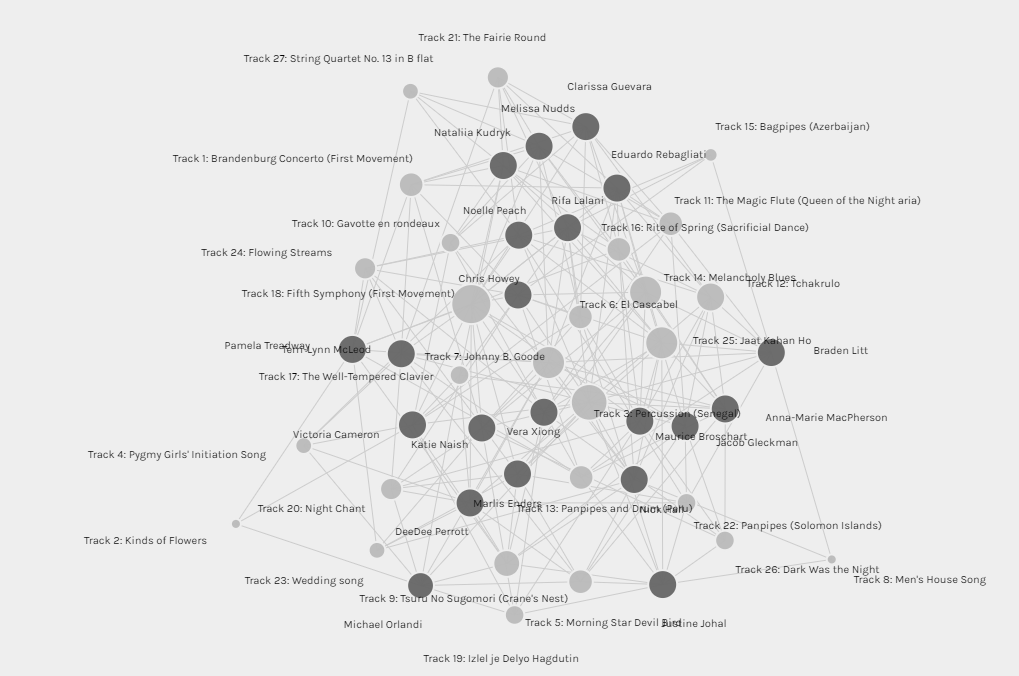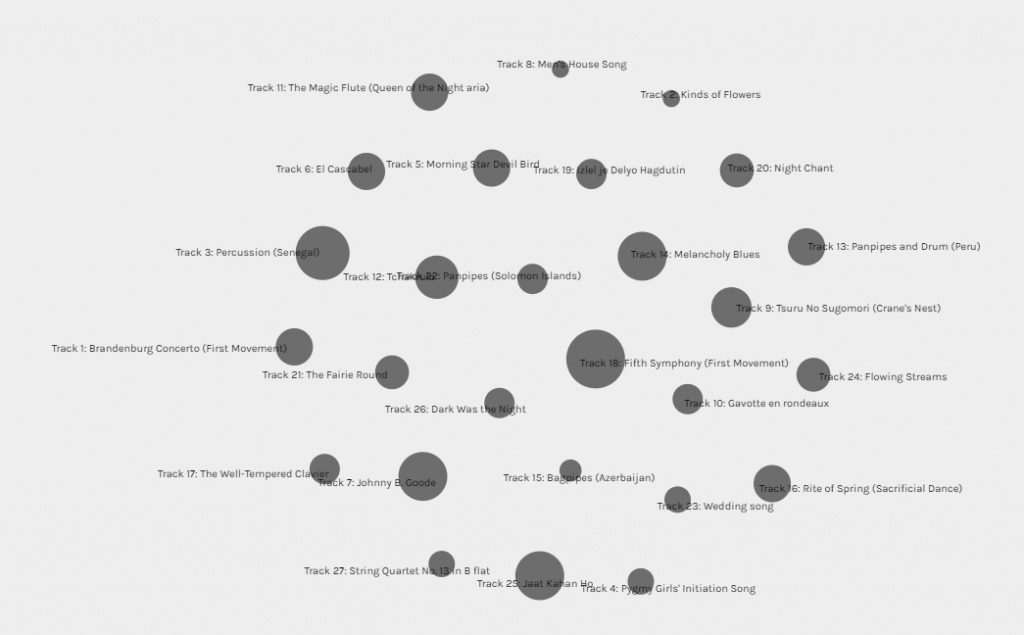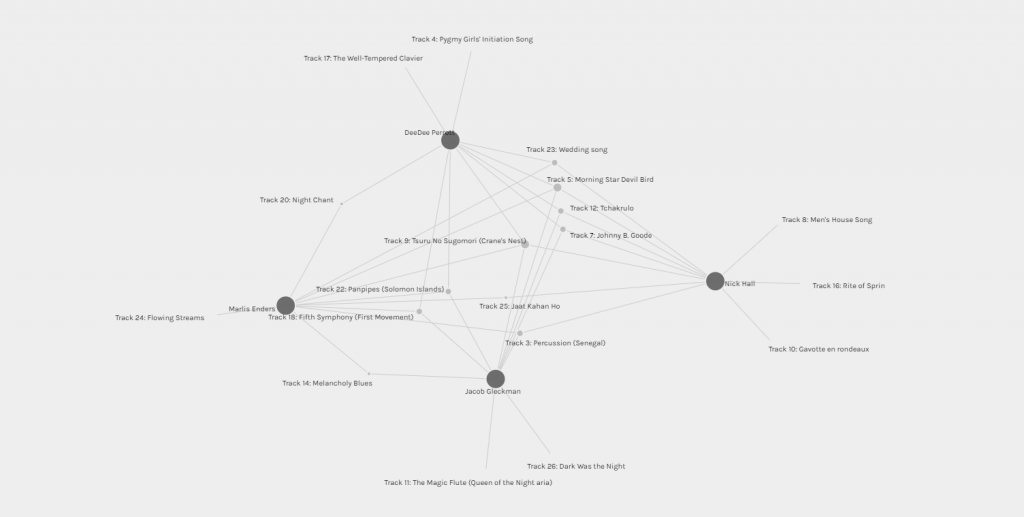
Starting with the network as a whole, it was difficult to begin to visualize any connections due to the large amount of information shown. The outliers that had few ties such as Kinds of Flowers (3 edges) and the composition, the Fifth Symphony, which was chosen by nearly all the curators (16 out of 21) were easy to spot but I could not make any connections with the curators and their music choices.

To look more closely at the popularity of each song, I removed the edges and curators from the graph. This is represented in Figure 2 where each circle is a track and the larger the circle, the more edges it had. Several of the larger nodes were North American songs-Johnny B. Goode and Melancholy Blues. There were several Bach selections in the 27 songs and they each had between 6-8 edges each, perhaps due to having to choose between three tracks by same composer.
Looking into the different communities within the network, I was able to find a smaller group that contained Marlis, Nick, Jacob and myself.

I found I shared just over half of my song selections with each of them. There were two songs with edges to all 4 of us – Morning Star Devil Bird (didgeridoo and vocalization from Australia) and Tsuru No Sugomori (shakuhachi music from Japan). There were also multiple song nodes that had connections with at least 3 of the community – Fifth Symphony (Europe), Percussion (Africa), Panpipes (Solomon Islands), Johnny B. Goode (North America), and Tchakrulo (Asia). To help me determine why we were grouped together I read over each of the Task 8 posts for the other members and found we all had different reasons for our song selection. Nick included a variety of instruments and heritages. Jacob used personal preference and the songs that had used only one type of instrument or vocalization. For Marlis, her focus was on cultural diversity. My choices were based on mood categories and the inclusion of each continent. We all included variety of some component as part of the process and the songs that had the greatest number of links were all from different continents and were very unique from one another in the instruments used. Using the network alone, I was not able to make these connections as the country of origin was not included within the data. It would have been interesting to use the Map feature within the program to see if there were patterns within the larger data set for where each song originated.
It is important to use multiple sources of information before inferring correlation as combining the data from Palladio with the individual posts allowed me to make some clearer connections in our song curations. The tasks provided qualitative information on what the curators thought process was and the network gave quantitative data based on the choices.
Even with Task 8 posts and the network provided, it was difficult to interpret any null choices. By isolating the song popularity in the Figure 2 you could see which songs were not chosen often but without further information about each node I could not interpret why several songs were chosen less frequently.








braden litt
November 7, 2021 — 6:13 pm
Hi DeeDee,
I really enjoyed reading about your process of analyzing the network created by this task and the process of trying to untangle the mess of nodes and edges to meaningfully interpret the data. I found it incredibly frustrating that the network disregarded the qualitative aspect of the reasoning for song choice and I also found myself looking to the blogs of those in my community for further clarification.
I focused on the smaller community for my analysis simply because I found the whole sample overwhelming. It was interesting to note that for tracks that were not selected in my community, there simply was no node present. I had to compare the tracklist very carefully to the data in order to find this discrepancy. I found myself thinking about the data that is represented in other algorithms, such as Google, that is based on interaction levels and how this unintentionally can recreate positions of inequity for those whose knowledge is not being represented. I am curious as to whether you had come across any tracks that were not represented or data that may be hidden by the algorithm and if there are any potential impacts that could have on those who consume the information.
Thanks for sharing!